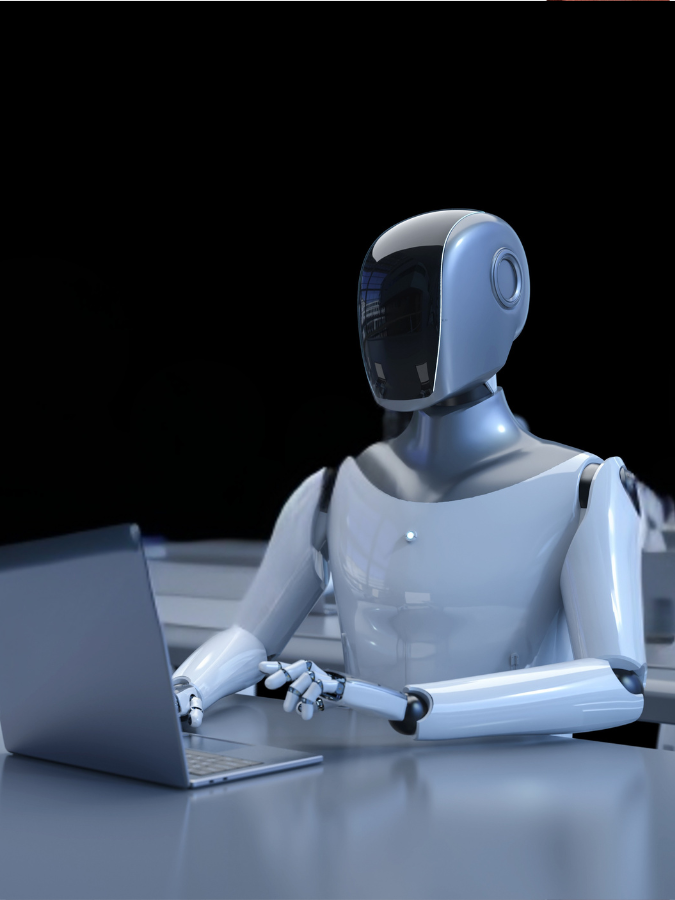Mornings used to start with a rush of adrenaline. Not the good kind—the kind that hit somewhere between your second sip of coffee and the tenth email flagged “urgent.”
For solopreneurs, the dream of working for yourself often comes with a heavy cost. You’re not just the CEO—you’re the assistant, the marketer, the customer support rep, and sometimes even the IT department. One missed call, one late reply, and the whole house of cards feels like it could tumble.
The to-do list grows faster than your ability to cross things off. Somewhere along the way, the freedom you fought for begins to feel like a different kind of trap: endless tasks stealing hours from the work that really matters.
And then—quietly, almost without fanfare—personal AI tools started slipping into the picture. Not as shiny new toys or futuristic gimmicks. They showed up in the small cracks of the day: suggesting a better email draft, reminding you of a meeting you almost forgot, organizing notes before you even asked.
For solopreneurs stretched thin, these tiny moments of support weren’t just helpful. They felt like a lifeline.
How Solopreneurs Turned AI Into a Secret Weapon
The shift didn’t happen overnight. It wasn’t a lightning bolt moment or a headline splashed across the news. It started small, almost invisible.
A freelance writer used an AI tool to rough out the first draft of a blog post, cutting writing time in half.
A business coach fed a list of client questions into an AI platform and got organized talking points in seconds.
An online store owner set up an AI assistant to answer customer inquiries while she packed orders late into the night.
None of them were trying to build an empire with AI. They were trying to find an extra hour. A little more breathing room.
Personal AI tools became like a second set of hands—ones that didn’t need sleep, didn’t miss deadlines, and didn’t charge an hourly rate. They took on the boring, brain-draining tasks so solopreneurs could stay focused on the work that sparked their businesses in the first place.
For the early adopters, it wasn’t about chasing trends. It was about survival.
And for many, it quietly became the best decision they ever made.
What Today’s Personal AI Looks Like for a Solo Business Owner
Personal AI doesn’t wear a suit and tie. It doesn’t make big speeches or demand attention. Most days, it hums quietly in the background, doing the work no one sees but everyone feels.
It drafts your emails when you’re stuck staring at a blank screen.
It sorts through customer messages and flags the ones that can’t wait.
It pulls together social media ideas when inspiration runs dry.
It schedules meetings before you even realize your calendar’s about to explode.
There’s no dramatic handoff of control. You’re still steering the ship—you just have a few invisible crew members handling the ropes.
Today’s personal AI doesn’t try to replace the solopreneur’s gut instincts or creative spark. It respects the rhythm of solo work: the quick decisions, the late nights, the personal touch that no algorithm could ever mimic.
Instead of feeling like a takeover, it feels like a quiet collaboration.
One that gives solo business owners a rare and precious gift: the ability to work smarter without sacrificing the heart of what makes their business their own.
The Emotional Shift: From Overwhelm to Breathing Room
There’s a difference between being busy and being buried.
Most solopreneurs know that difference by heart.
Before personal AI tools found their place, many solo business owners lived in a constant state of catch-up. A late email felt like a personal failure. An unfinished task list hung over the weekend like a storm cloud. The work never stopped tapping on their shoulders, even during dinner, even in those rare stolen moments of rest.
Then something subtle changed.
Answering every email didn’t feel impossible anymore.
Showing up on social media didn’t drain the last ounce of creativity.
Following up with clients didn’t fall through the cracks.
It wasn’t because the workload vanished. It was because they finally had support.
A different kind of support—one that didn’t nag, didn’t need hand-holding, and didn’t come with office drama.
The emotional shift was real and immediate.
Solopreneurs started breathing easier. Thinking clearer. Feeling that surge of energy that only comes when you’re finally not drowning in the work you never meant to do in the first place.
Personal AI didn’t change who they were.
It gave them permission to show up as the business owners they always wanted to be.
Real-life examples of solopreneurs thriving with AI support

A graphic designer once spent hours staring at a blank page, trying to crack a fresh concept for a new client. Today, she leans on her AI assistant to generate rough idea boards. It’s not about stealing creativity—it’s about jumpstarting it. She still brings the magic. Now she gets there faster.
An online store owner used to drown in customer emails, every question pulling time away from actually running the shop. Now, a simple AI tool filters inquiries, answers common ones automatically, and flags anything that needs a personal touch. She’s shipping orders and brainstorming new products instead of playing whack-a-mole in her inbox.
A career coach used to lose potential clients because scheduling felt like a never-ending back and forth. Now, her AI assistant handles bookings, sends gentle reminders, and even checks in after appointments. No more missed opportunities, no more mental clutter.
These solopreneurs didn’t build empires overnight.
They built breathing room—one smart tool, one small shift at a time.
The wins might seem small on paper. But ask anyone who’s lived it: feeling like you’re finally on top of your own business is anything but small.
Why this is only the beginning
The tools solopreneurs are using today barely scratch the surface of what’s coming.
Personal AI isn’t slowing down. It’s getting smarter, more intuitive, and more tuned into the way real people actually work.
Voice assistants are learning to handle complex conversations, not just set timers.
AI schedulers are picking up on your habits—knowing when you like meetings and when you need creative time.
Visual AI tools are starting to suggest entire branding ideas based on just a few sketches or notes.
It’s no longer about having a machine that follows instructions. It’s about having a silent partner that understands what you need without a ten-step explanation.
For solopreneurs, the future doesn’t look like giving up control. It looks like gaining even more of it.
More time to build. More energy to create. More freedom to grow a business that feels personal—not buried under busywork.
The days of doing it all alone, with nothing but grit and caffeine, are quietly fading.
And something much better is taking its place.
Solopreneurs and the quiet evolution of support
Solopreneurs didn’t set out to build a team of machines.
They set out to protect the spark that made them step out on their own in the first place.
Personal AI didn’t steal that spark. It guarded it.
It chipped away at the noise. It cleared the clutter. It handed back the time and space that solo business owners need to dream bigger, act bolder, and build businesses that feel fully, unmistakably theirs.
This shift didn’t happen with a bang.
It happened in the background—one smart reply, one organized inbox, one scheduled appointment at a time.
And for solopreneurs everywhere, that quiet evolution might be the loudest sign yet that they’re finally getting the kind of support they’ve deserved all along.
Innovation used to look like a mad scientist alone in a lab, or a tight-lipped executive team huddled behind closed doors. Ideas were precious secrets, carefully guarded and polished before they saw the light of day.
But that version of innovation is running out of steam.
A few years ago, a car company and a software giant sat at the same table for the first time. One brought a century of expertise in engines and wheels. The other brought a wild vision of machines that could think for themselves. Alone, neither had the full picture. Together, they built the first real steps toward autonomous driving — something that would have stayed locked in science fiction if either side had tried to go it alone.
That’s the thing about today’s breakthroughs. They don’t come from staying inside your comfort zone. They happen when industries that once had nothing to say to each other start speaking the same language.
The future doesn’t belong to the biggest players anymore. It belongs to the best collaborators.
How innovation used to happen: inside closed rooms
For most of modern history, innovation wore a hard shell. Companies built walls around their ideas. Engineers, designers, and executives worked behind the scenes, racing to outdo competitors without tipping their hand. Every major breakthrough was treated like a secret weapon — something to be hidden until it could be patented, packaged, and sold.
It made sense for a long time. When markets were more predictable, when technology moved slower, a little secrecy could stretch an advantage for years. You could afford to work quietly, unveil something big, and enjoy the spotlight without too much risk of being outpaced overnight.
But the rules started to crack when the world began moving faster than any single company could manage. Suddenly, industries that once had decades to perfect a product were seeing entire business models shift in a matter of months. Holding onto an idea until it was “ready” became a gamble fewer could afford.
The old model of locked doors and long timelines wasn’t built for this kind of speed — and it certainly wasn’t built for the kind of complex, messy problems we face today.
Why cross-industry collaboration sparks real breakthroughs
Fresh ideas don’t always come from thinking harder. Sometimes, they come from thinking differently — and that’s what cross-industry collaboration forces people to do.
When a biologist talks to an engineer, or a fashion designer sits down with a materials scientist, the conversation doesn’t stay stuck in old patterns. It bends in ways that pure industry insiders wouldn’t even think to explore. Problems that seem unsolvable in one world often look simple when seen through another lens.
This is where real innovation takes root — at the messy, sometimes awkward intersection of wildly different expertise. One side brings the questions no one else is asking. The other side brings tools no one else thought to use.
Instead of spending years reinventing answers, collaborators borrow brilliance. They build on it. They shape it into solutions that feel obvious in hindsight but would have been impossible to reach alone.
The future won’t be written by siloed experts polishing their corner of the world. It will be shaped by unlikely partnerships that aren’t afraid to ask, “What if we didn’t do it the usual way?”
Real examples that show the power of cross-industry teamwork
When healthcare met technology, it didn’t just create better medical records. It opened the door to telemedicine — a way for patients to see doctors without stepping outside their homes. What once seemed like science fiction is now routine, connecting people to care across distances that used to leave them isolated.
In the fields of rural America, farmers teamed up with aerospace engineers. Together, they turned satellite imaging and GPS tracking into a tool for precision agriculture. Instead of guessing which parts of a crop needed help, farmers now get real-time data that tells them exactly where to act — saving water, money, and entire harvests.
Fashion didn’t sit still either. As pressure grew for sustainability, designers found unlikely allies in material scientists and biotech innovators. Today, sneakers are being woven from lab-grown fibers and handbags are crafted from plant-based leather. Entire industries are rewriting what it means to create without destroying.
These aren’t isolated stories. They’re signals of a bigger shift — a world where the best ideas aren’t born in one industry or another. They’re born in the space between.
The challenges that come with cross-industry partnerships
It sounds exciting — and it is — but crossing industries isn’t as simple as pulling up a chair and swapping ideas. Collaboration comes with friction.
Different industries carry different rhythms. What feels fast in manufacturing can feel glacial to a tech startup. What seems cautious to a medical researcher can look reckless to an entrepreneur. Even the words people use — simple terms like “delivery,” “design,” or “launch” — can mean completely different things depending on where you sit.
Trust doesn’t build itself, either. It takes time to bridge the instinct to protect what you know with the need to share enough to build something better. Some teams tiptoe around each other, scared of giving away too much. Others rush too fast, and the whole thing collapses under the weight of misaligned expectations.
The hardest part isn’t finding brilliant ideas. It’s building enough shared understanding to let those ideas breathe.
What successful cross-industry collaborations have in common
The teams that make it work don’t stumble into success. They build it piece by piece.
First, they agree on something bigger than protecting their own turf. They find a shared mission — a goal that feels worth the risks and the hard conversations. Without that, partnerships tend to buckle the first time things get uncomfortable.
They also show up with a real respect for what the other side knows. It’s easy to assume your industry’s way of doing things is the smart way. It’s harder, and much more powerful, to recognize that someone else’s experience might hold the missing piece you’ve been chasing.
And maybe most important, successful collaborators aren’t afraid to rethink the way they work. They leave room for new processes, new questions, and new answers. They understand that if you build a partnership with the same old blueprints, you’re going to get the same old results.
The real breakthroughs happen when people are willing to get a little uncomfortable — and stay there long enough to build something better.
Looking ahead: why the future belongs to collaborators, not competitors
The lines between industries aren’t just blurring. They’re breaking down completely.
Healthcare companies are hiring data scientists. Tech firms are teaming up with educators. Energy giants are sitting at the same table with climate researchers and logistics experts. It’s not because they’re feeling generous. It’s because the next wave of breakthroughs is too big, too complex, and moving too fast for any one industry to handle alone.
The companies that cling to old rivalries are already falling behind. They’re solving yesterday’s problems while the future rushes past them.
Meanwhile, the ones willing to share, adapt, and build together are carving out new paths — paths that aren’t just profitable, but transformational.
It’s no longer about who can invent the best tool inside their own walls. It’s about who can build the strongest bridges across them.
A call for open doors
The future doesn’t belong to the loudest voice or the biggest budget. It belongs to the people and companies willing to open their doors, listen across boundaries, and build something they couldn’t have imagined alone.
Cross-industry collaboration isn’t a trend. It’s a survival skill. It demands curiosity, humility, and the courage to work with people who think differently — sometimes radically so.
The best ideas of the next decade won’t come from standing taller inside your own field. They’ll come from reaching across to someone else’s and asking, “What could we build together that we can’t build apart?”
Those open doors are where the future will be written.




